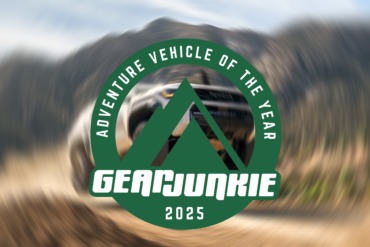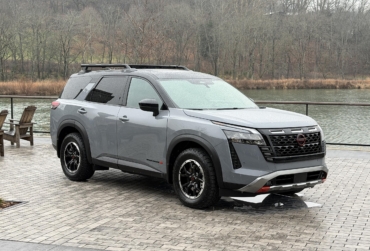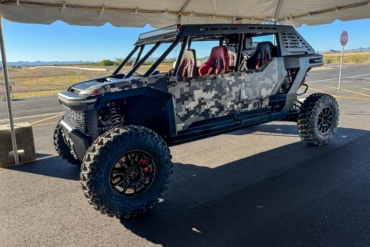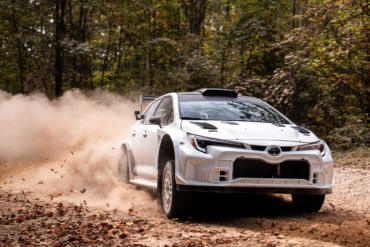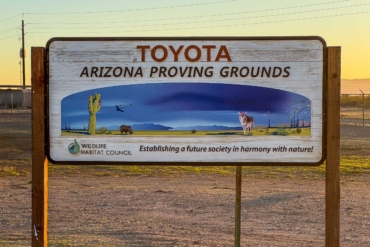RAM offers two serious off-road trucks in its lineup: the Rebel and Power Wagon. Our motors editor got a chance to take them off road back-to-back in Whistler, British Columbia, to see how they stack up.
While the big three-quarter-ton Power Wagon dwarfs the half-ton Rebel, they have a lot in common. They both focus on off-road capability. Lucky for us, RAM invited us up to the mountains around Whistler to play with the new full-size trucks off road. They are both quite impressive!
Both trucks come with hill descent control, rear lockers, skid plates, big front tow hooks, four-corner coil suspension with Bilstein off-road-tuned shocks, and 33-inch AT tires wrapped on 17-inch wheels. You can upgrade both with a 12-inch infotainment screen and the Rambox bed storage system. They both even offer up big V8 Hemi power, albeit with very different motors.

To top off the similarities, both trucks are somehow also in the same price ballpark. The Rebel starts at $44,490 and the Power Wagon starts at $53,250. All being equal as possible and speccing the trucks as I would buy them, and as I tested them, the Rebel comes in around $58,775 and the Power Wagon at $61,565.
RAM Rebel
The Rebel was introduced in 2015 and now accounts for about 10 percent of U.S. RAM truck sales. This is a pretty good indication that people like driving big, comfortable, off-road-capable trucks. Besides being capable, the Rebel also has the sporty looks that help it sell well.
The Rebel comes with the V6 Pentastar standard, but you’ll probably want either the 5.7 V8 Hemi or the new 3L EcoDiesel option. You can read all about our thoughts on the new EcoDiesel Rebel here. For this Canadian adventure, we had a Hemi-powered Rebel to play with, which offered up plenty of power for both on- and off-road adventures.
You get a factory one-inch lift on the Rebel, along with remote reservoir Bilstein shocks. If you option the Rebel with the Air Suspension, you can gain another inch of ride height/clearance. The Rebel comes with 3.92 gearing.
While the Power Wagon only comes in a Crew Cab, you can get the Rebel in a Quad Cab configuration as well. There is no single-cab option on either truck.
I love the smooth ride the four corner coil springs provide to the Rebel, especially with the air suspension option. Off road, the truck is quite capable in a wide variety of terrains, especially when you use the easy button, better known as the rear locker. The truck feels light and nimble and offers plenty of obstacle-clearing power when equipped with the Hemi or EcoDiesel.
The main drawback to the Rebel off road is the breakover angle. As with all modern American pickups, the wheels have been pushed to the corners of the truck to maximize interior cabin space. I’m also really not a fan of the dial drive selector, especially when trying to make tight maneuvers like three-point turns. It’s way too easy to put the truck in park instead of reverse when shifting from drive.
It also generally requires you to look at the dial to be precise with it. Inside the Rebel, I’m also not impressed by the diamond plate-patterned plastic trim pieces throughout the interior. It makes an otherwise really nice interior feel a bit cheap in my opinion.
RAM Power Wagon
The Power Wagon is a much bigger truck than the Rebel in all ways, and along with that comes more capacity. It’s capable of carrying a 3,987-pound load, which is more than double the capability of the Rebel.
The Power Wagon can also tow a massive 19,780 pounds, which is at least 7,030 pounds more than the Rebel. It also comes with big, high-quality adjustable tow mirrors standard. They make towing easy but the already-huge truck a bit wide when off road.
A 12,000-pound WARN winch with synthetic line, front locker, and electronic sway bar disconnect come standard on the Power Wagon. These greatly improve its off-road capabilities. These are the type of options you might expect on a Jeep but rarely see on a truck from the factory.
A 410-horsepower and 429 pound-foot of torque 6.4L V8 Hemi is the only motor option on the Power Wagon. Sadly there are no diesel options on offer.
You get a 2-plus-inch lift, 51:1 crawl ratio, and 4:10 rear axle standard on the Power Wagon. While it comes with 33-inch tires standard, you can fit 35-inch tires by just upgrading the wheels to provide more backspacing.
On road, the Power Wagon feels like a big heavy truck. The heavy-duty suspension isn’t all that comfortable on the road, but the big Hemi V8 puts out plenty of power whenever you depress the skinny pedal.
The upside to the stiff suspension is that the truck corners extremely flat and offers a quality ride when loaded down with equipment or a trailer. The 360-degree camera system is super slick and great for tackling off-road terrain.
My biggest gripe, which is a tiny one at that, is the hooks that are integrated into the winch fairlead. These hooks are designed to hold the winch hook but expose the synthetic line to debris and sun damage. They also easily break off, as I’ve personally seen on a truck already.
Which Off-Road RAM?
I’d take the Rebel if I wanted a comfortable everyday driver that’s also off-road capable, especially in mild terrain where higher speeds are common. The ride comfort with the optional air-ride suspension is exceptional, especially on road.
I’d buy the Power Wagon if I wanted a truck that can handle and tow big loads and comes standard with most of the off-road accessories I’d need and want. Besides installing bigger tires and replacing the goofy winch fairlead, there isn’t much the Power Wagon needs to be adventure-ready.
The electronic sway bar disconnect gives the truck a ton of articulation. That, combined with the front and rear lockers, makes this truck nearly unstoppable off road. The big size is the only real drawback on tight, technical terrain.
The real answer is that neither of these trucks will be the king of the off-road trucks at RAM for very long. Late next year, you can expect RAM to release a 575-horsepower, supercharged Hemi-powered “TRX” Rebel model. RAM showed this off-road beast of a truck as a concept back in 2016. It’s sure to give the Ford Raptor some serious competition in 2021.





